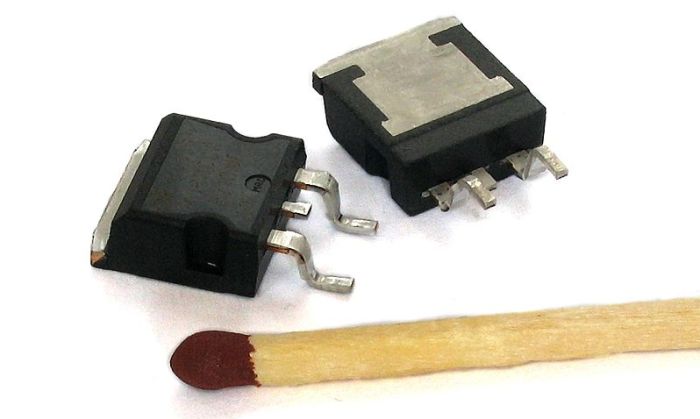Vacuum Transistor: A Hybrid Technology ‘Made of Nothing’
![By Stefan Riepl (Quark48).Quark48 at de.wikipedia [CC-BY-SA-2.0-de (http://creativecommons.org/licenses/by-sa/2.0/de/deed.en)], from Wikimedia Commons](https://techtheday.com/wp-content/uploads/2014/06/vacuum-tubes.jpg)
By Stefan Riepl (Quark48).Quark48 at de.wikipedia [CC-BY-SA-2.0-de (http://creativecommons.org/licenses/by-sa/2.0/de/deed.en)], from Wikimedia Commons
Vacuum tubes have become an “endangered” (in a good way) technology in the middle of the 1970’s as they were only used in TV picture tubes and other niche applications. Today, it can be said that these vacuum tubes have almost become extinct. Vacuum tubes or electron tubes are devices created to control electric current through a vacuum in a sealed container. In computers, they were used as switches. They made it possible to create the first electronic computer although they have now been replaced by solid state electronics.
However, it appears that vacuum tube technology is going to have a comeback in the near future. Scientists at the NASA Ames Research Center have been working on the development of vacuum-channel transistors. The prototypes created are still far from perfect but even in their early stage, these prototype vacuum-channel transistors already show promise in becoming an excellent alternative to the traditional silicon transistors at present.
As reported by the NASA researchers, vacuum channel transistors can be 10 times faster compared to ordinary silicon transistors. They have the potential of operating at terahertz frequencies. Solid state devices are incapable of achieving such speeds and are unlikely to become capable of doing so even after years of advancements.
Here’s a summary of the potential benefits of vacuum-channel transistors:
- Faster operation, possibly reaching the terahertz levels
- Higher heat and radiation tolerance
- Faster charge transmission as electrons propagate freely through a vacuum
- Less noise and distortion (compared to solid state materials)
Combining the Concepts of Vacuum Tubes and MOFSET
Vacuum-channel transistors can be likened to an offspring of vacuum tube and MOFSET technologies. MOFSET is an acronym for metal oxide semiconductor field effect transistors. They are the common components that enable the many capabilities of digital electronics at present. Vacuum tubes and MOFSETs may seem different but they have similarities that can be explored to come up with a hybrid that takes the advantages of both. One notable similarity is the three-terminal nature of both, which makes them act as an amplifier or as a switch. This allows them to be fused in a similar form as they operate in a similar manner.
NASA’s vacuum-channel transistors can be described as the product of combining traditional vacuum tube and modern semiconductor-fabrication technologies. It addresses the bulkiness and short life problems of vacuum tubes while incorporating the advantageous size, low price, and long life of solid state devices. It’s like creating vacuum tubes in a transistor form or body. The result is a device that looks like a typical MOFSET.
Device Made of Nothing
Information about this new technology is detailed in an article entitled “The Device Made Of Nothing,” something that sounds really intriguing. How can something be possibly created out of nothing? Well, it could be possible if what you want to make is love and you’re Air Supply (making love out of nothing at all) — it’s a joke if you didn’t realize it☻
Just to set things right, there’s really nothing about the title. You still can’t create something out of nothingness. The title published offline and on the IEEE website is mostly just a way of sensationalizing things or attracting readers and we admit to falling for it. Nevertheless, we can view the misleadingly sensational title as something sensible by appreciating figure of speech. The authors may have just wanted to play with metaphors by representing vacuum tube technology with “nothing.” That’s apparently the best way to explain the eyebrow-raising “device made of nothing” line.
Microscopic Vacuum Tubes that Could Power the Supercomputers of the Future
Even with the looming end of Moore’s Law, miniaturization in technology is still likely to continue. It may not be in the same way Moore’s Law envisioned but through the use of better and more advanced materials and components that enable the production of smaller but highly powerful electronic devices. Vacuum transistors are seen as the replacement for traditional silicon with their more efficient and more powerful performance.
![By Marcin Wichary (Flickr: Pieces of Crays) [CC-BY-2.0 (http://creativecommons.org/licenses/by/2.0)], via Wikimedia Commons](https://techtheday.com/wp-content/uploads/2014/06/supercomputer.jpg)
By Marcin Wichary (Flickr: Pieces of Crays) [CC-BY-2.0 (http://creativecommons.org/licenses/by/2.0)], via Wikimedia Commons
The vacuum transistors scientists at NASA created managed to work at 460 GHz. That’s hundreds of times faster than the typical processor speed used in standard computers today. This new technology seemingly finds its way out of the supposed limitations that come with the expected invalidity of Moore’s Law. By combining vacuum tube technology with solid state technology, it may no longer necessary to increase the number of transistors over a smaller area to achieve higher performance. NASA scientists also think that it’s possible to achieve microprocessors that can work at speeds breaching the 1 terahertz level.
This vacuum transistor technology is still at its infantile stages but it’s showing a great deal of promise. We can’t wait to see and experience what it can do to modern computing as it becomes ready for practical application.
